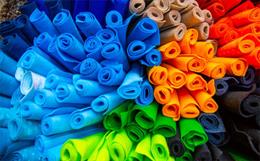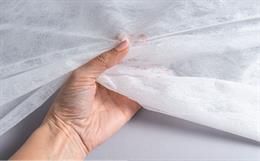The annual growth rates of over 6%seen in the European nonwovens industry over the past 20 years have meant it haslong enjoyed the position of being the largest nonwovens producing andexporting bloc in the world. In 2009, this leading status, at least quantitatively,will no longer be enjoyed by the Old Continent.
China is seen as the largest country producing nonwovens with a production of 1.1 million tons in 2007 and an estimated 1.5 million tons per annum by 2009. Meanwhile, market observers are keenly watching India - a market hungry to catch-up - where massive investment plans await confirmation. Indeed EDANA will organise nonwovens training courses in Delhi for the third time in November 2008. Similarly, Latin America has some impressive new nonwovens capacity coming on-stream or announced, making it the other investment area of choice for the key multi-continental players. New markets are also being opened up to nonwovens, such as certain types of chemical protective clothing, or the incorporation of viral barrier properties in the fabric itself. Some of the applications where nonwovens are seeing increased uptake are in geotextiles and filtration with increased product sophistication and enhanced functional characteristics. With ever-reducing weights, refined surface treatments, composites and hybrid multilayer webs, all resulting in improved performance and aesthetics, nonwoven producers are doing more with less and diversifying their sales into new areas across the board.
Qualitatively however, with itsleading edge in nonwovens web making and bonding machinery and an application mixoriented towards increasingly sophisticated end-uses, the European nonwovensindustry has demonstrated in Geneva (INDEX 08) that in terms of technologicalcontent and value, it maintains its lead.
Naturally, the issue of sustainabilitywill be an additional factor to be taken into account in the future. Not onlywill regulatory compliance be expected, but pro-active sustainable initiativesand their communication will become a must for consumer goods converters.These requirements will inevitably be passed on to suppliers and those whoanticipate this phenomenon are likely to be those who benefit most. This isalso why, amongst other reasons which include logistics and thecapital-intensive nature of our industry, local or at least closeproduction will still be favoured for many end-uses ranging from hygieneto automotive.
In automotive applications, somenonwovens have now even become visible features in car interiors, no longerjust hidden from view as carpet underlay. In terms of production method,needle-punched nonwovens continue to be trendy in certain sectors, such asautomotive, where their economics, mechanical properties and weight continue tomake them the product of choice in certain applications.
Actual demand or growth potentialfor technical nonwovens remains fairly buoyant in particular areas of theglobe, such as the Middle East, Russia and India, where investments in theregions infrastructure and improvements in building and environmentalstandards ensure a bright future for geotextiles, roofing membranes,filtration, and other durable applications.
For certain weight of nonwovens,hydroentangled nonwovens continue to increase market penetration in areas otherthan their mainstream use in wipes. The presence of spunlace nonwovensproducers diversifying their offer as newcomers in the filtration market are acase in point.
Despite raw material price increasesand competitiveness issues linked to crude, as well as the record highs ofthe Euro versus the dollar, the strong Euro is also evidence that people aroundthe world believe the Euro economy isn't as weak as it was once thought. Theversatility and flexibility of nonwovens production methods will be enhanced,and hybridisation is the trend of the future. Moreover, energy saving and moregenerally sustainability improvement across the entire supply-chain will morethan ever affect innovations.
About EDANA:
EDANA is an international association serving the nonwovensand related industries (previously known as the European Disposables andNonwovens Association) has 220 member companies in over 30 countries. ItsMission is to create the foundation for sustainable growth of the nonwovens,absorbent hygiene products and related industries through active promotion, education and dialogue.
To read more articles on
To promote your company, product and services via promotional article, followthis link:







